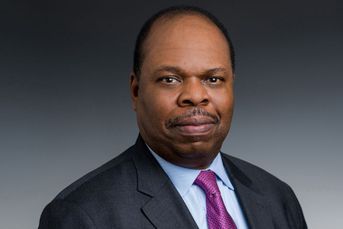Head count at Wells Fargo Advisors slips, but exits continue to slow
 1
1
Meanwhile, the wealth management group sees a decline in assets due to net outflows.
Wells Fargo Advisors is continuing to see churn in its broker and adviser workforce, but — after three years of watching advisers leave the firm in the wake of banking scandals — the pace continues to slow down.
In the earnings report Tuesday from Wells Fargo & Co., the bank parent of Wells Fargo Advisors, the brokerage group reported a head count at the end of the third quarter of 13,723 brokers and advisers, which is down 351, or 2.5%, since the end of September last year.
[Recommended video: What advice industry needs to do as nation’s diversity evolves]
But compared to the second quarter, which ended in June, Wells Fargo Advisors reported a decrease in adviser head count of only 76, or less than 1%.
In September 2016, Wells Fargo & Co. reported that bank employees had secretly created millions of unauthorized accounts in the names of customers without their consent. The bank was fined $185 million and then-CEO John Stumpf resigned abruptly.
Those issues continue to dog the bank. The lender reported Tuesday that it took a $1.6 billion expense for litigation tied to the scandals in its retail bank, dragging down third-quarter earnings by 35 cents a share. Net income fell 23% to $4.61 billion, or 92 cents a share.
Since the scandals broke in September 2016, Wells has seen a net decrease of more than 1,300 brokers and advisers.
A spokeswoman for Wells Fargo Advisors, Shea Leordeanu, said the firm had a strong recruiting quarter. Wells Fargo Advisors is actively recruiting while its three wirehouse competitors, Merrill Lynch, Morgan Stanley and UBS, have recently pulled back from recruiting because of the expense involved and instead are focused on growing the businesses of their current advisers.
“We hired more advisers into Wells Fargo Advisors than those who left to competitors,” Ms. Leordeanu wrote in an email. “Further, these new hires do about 58% more production than the average advisor leaving for competitors — evidence that we are recruiting larger producers than those leaving.”
The slight decline in adviser head count was due to advisers retiring or otherwise leaving the industry, she noted. “We anticipate continued retirements, as we’ve seen enthusiastic response to Summit, our enhanced succession program.”
Meanwhile, the bank’s retail and wealth management groups reported “net outflows” of some assets, a closely watched sign in the financial advice industry.
The retail brokerage group reported client assets of $1.6 trillion, down 1% from the prior year, and advisory assets of $569 billion, up 2% from 2018, driven by higher market valuations but partially offset by net outflows.
Its wealth management business reported $230 billion in assets, down 4% from the prior year, which was primarily driven by net outflows.
Learn more about reprints and licensing for this article.








